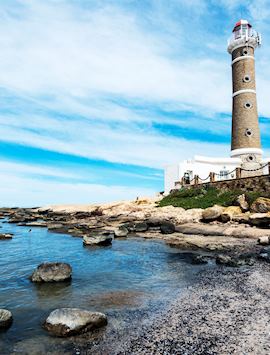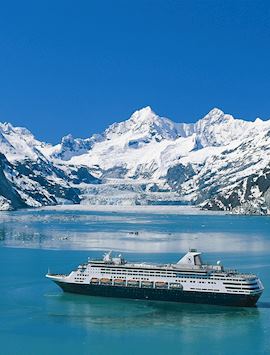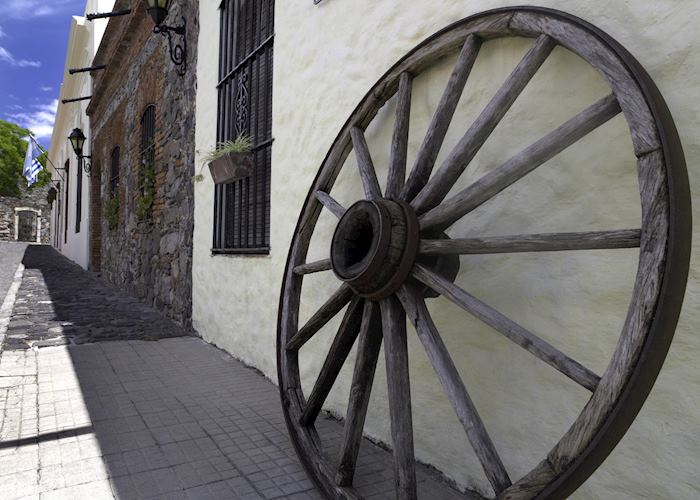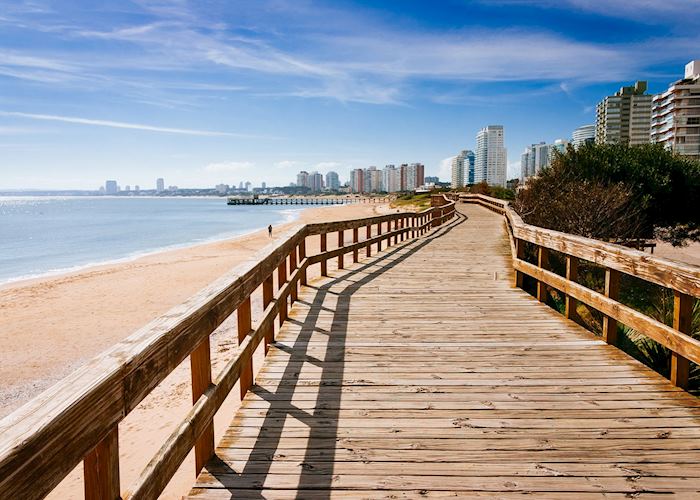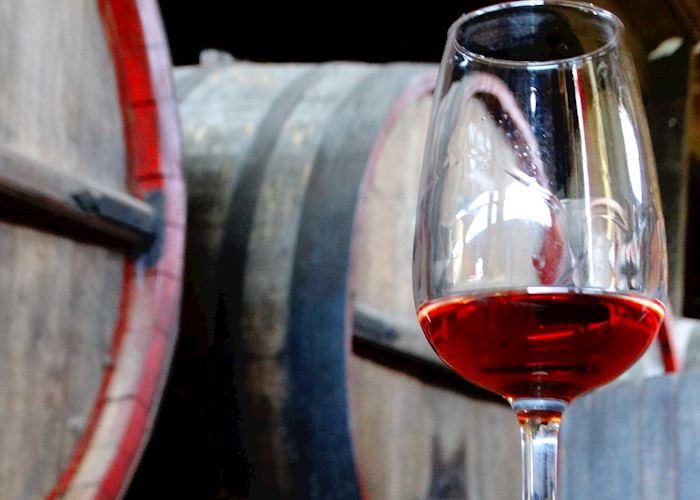
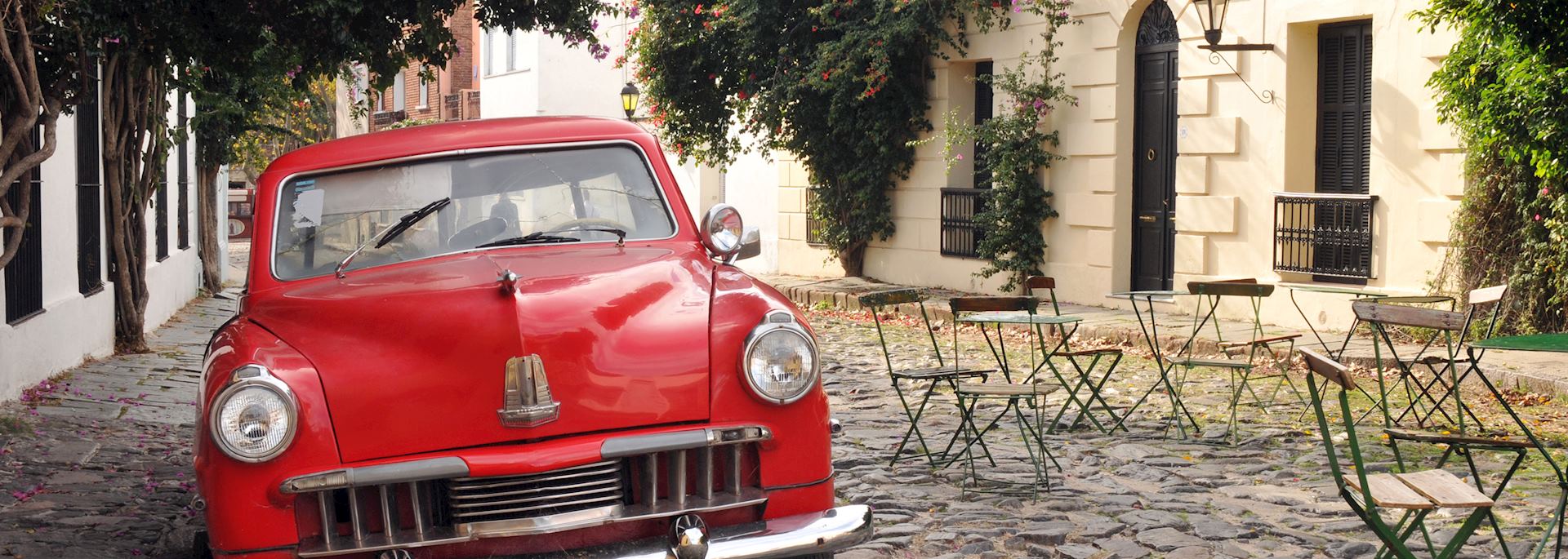
Tailor-made Uruguay holidays shaped around your passions
Uruguay is arty, wealthy and well-groomed. But, away from its cities and polished beach resorts, things get a little wilder. Gauchos canter across open pampas, and sand dunes flank tiny fishing villages where time seems to stand still. Though it’s sandwiched between Argentina and Brazil, our specialists think Uruguay merits a trip in its own right (although it proves a rewarding next step from its bordering countries). They’ve explored it on foot, on horseback, and behind the wheel, and they’ll use this knowledge to help you make the most of your holiday to Uruguay, however long you choose to spend here.
Driving is straightforward, and most attractions are within easy reach. You might explore the former Portuguese colony of Colonia del Sacramento, rub shoulders with the well-heeled residents of beachside José Ignacio, and dine in Montevideo’s finest steakhouses. Or, sidestep civilisation altogether and relax in vineyards or on a remote estancia.
Suggested tours for Uruguay
These tours give you a starting point for what your holiday to Uruguay could entail. Treat them as inspiration, as each trip is created uniquely for you.
Why travel with Audley?
- 100% tailor-made tours
- Fully protected travel
- Established for over 25 years
- 98% of our clients would recommend us
Best time to visit
Our specialists advise on the best months to visit Uruguay, including information about climate, events and festivals.
Request our brochure
Covering all seven continents, The World Your Way shows you how you can see the world with us. It features trip ideas from our specialists alongside hand-picked stays and experiences, and introduces our approach to creating meaningful travel experiences.

Useful information for planning your holiday in Uruguay
The official language of Uruguay is Spanish. English is widely spoken in popular visitor destinations.
The currency of Uruguay is the peso ($U or UYU). You’ll find ATMs in cities and major towns, and credit cards are widely accepted.
Meals in Uruguay are meat heavy and you’ll see dishes such as chivito (beef steak sandwich), choripán (a chorizo hot dog), and asado (barbecued meat) everywhere. You’ll also find that food here has clear Spanish and Italian influences. On Sundays when families get together, pasta is often the main dish. On menus look for capeletis a la Caruso (pasta with a creamy, cheesy mushroom and ham sauce) which is a national institution.
For dessert, try tortas fritas (sweet fried pastries), arroz con leche (rice pudding), or chajá (meringue with apricots or peaches and whipped cream).
Although not as well known for its wines as Chile or Argentina, Uruguayan wines are well worth seeking out, especially the deep, rich, and full-bodied tannats. Hand produced in small-scale, family-run wineries, wines from Uruguay are generally thought of have more in common with European rather than other South American, wines.
Tipping 10% in a restaurant is expected in Uruguay. Drivers and guides should also be tipped but rates are at your discretion. Our specialists can provide more guidance specific to your trip.
For the latest travel advice for Uruguay, including entry requirements, health information, and the safety and security situation, please refer to the Foreign, Commonwealth & Development Office website.
Uruguay’s fine food and wine, ranching experiences, heritage architecture, and beachside resorts offer a beguiling mix of indulgence and adventure. You could ramble around Uruguay’s sophisticated cities with their historic buildings, museums, and art galleries, lingering over coffee as you watch the world go by, relishing the finest of meals, or learning to tango.
In the open pampas you’ll find ranches and gauchos and can head out on horseback to explore the grasslands or even take a polo lesson with an expert. Head for the coast to laze on dreamy beaches or visit small fishing villages and vineyards. Or explore historic towns where the Spanish and Italian influence is palpable in the ornate buildings and café culture.
Best of all, thanks to its diminutive size, sights are relatively close together so there’s no need for long journeys between them.
Uruguay has a broad range of places to stay from working estancias (cattle ranches) and fincas (rural estates) to elegant beach hotels and urban hideaways. In most rural retreats, characterful decor combines with home-cooked food, good wine, and a range of outdoor activities for a memorable stay.
You could relax in style in a beachfront retreat or a sleek, modernist wine lodge with a farm-to-table restaurant. Discover nearby beaches and natural trails from a coastal art hotel or explore Uruguay’s cities from a base in a historic townhouse with a private garden. For more ideas, browse our collection of places to stay in Uruguay.
Most visitors arrive in Uruguay’s capital Montevideo, and then make their way to Carmelo, Colonia del Sacramento, and José Ignacio. Montevideo is an affluent, progressive city with grand plazas lined with 18th-century buildings, vibrant markets, and nine separate beaches.
By contrast, Colonia del Sacramento is a UNESCO-protected riverside city with cobbled streets lined with historical buildings, while nearby Carmelo with its rolling hills and wineries offers vineyard tours, wine tastings, and fine food.
For beachfront relaxation, Punta del Este and José Ignacio are well-heeled coastal retreats with white-sand beaches, surfing, and lively nightlife, while inland, Uruguay’s estancias offer the chance to learn about gaucho life, dine under the stars, and enjoy horseback rides into the hills.
It takes around 14 and a half hours to fly from the UK to Uruguay.
The time zone in Uruguay is UTC-3 hours. Daylight Savings Time isn’t observed.
The best way of getting around in Uruguay is to travel by road. Uruguay’s infrastructure is good and it’s easy to rent a car to get around the sights. Alternatively, we can arrange for a local driver and guide.
A trip to Uruguay also combines well with time in Argentina, either in the form of a visit across the River Plate from Buenos Aires to Colonia del Sacramento or Montevideo, or by ending a trip around Argentina with a beach stay on the Uruguayan coast.
Use our travel tool to find up-to-date visa and passport requirements for Uruguay. Enter where you’re travelling to and from (including any stopover destinations en route or flight layovers), along with your intended travel dates and passport details, for a full list of requirements.
Speak to your doctor about vaccine advice for Uruguay and ensure you’re up to date with the recommended vaccinations for your home country. You can also check the suggested vaccinations on the Travel Health Pro website.
Uruguay in pictures
Our expert guides to travelling in Uruguay
Written by our specialists from the viewpoint of their own travels, these guides will help you decide on the shape of your own trip to Uruguay. Aiming to inspire and inform, we share our recommendations for how to appreciate Uruguay at its best.
-
What to do in Uruguay: Highlights of lesser-known South America ![Montevideo basilica]()
What to do in Uruguay: Highlights of lesser-known South America
What to do in Uruguay: Highlights of lesser-known South America
Specialist Fiona describes places to visit in Uruguay, a little-known corner of South America. She explains how it can be easily combined with a visit to Argentina, and how she fell for its art scene, beaches and estancia life.
Read this guide



